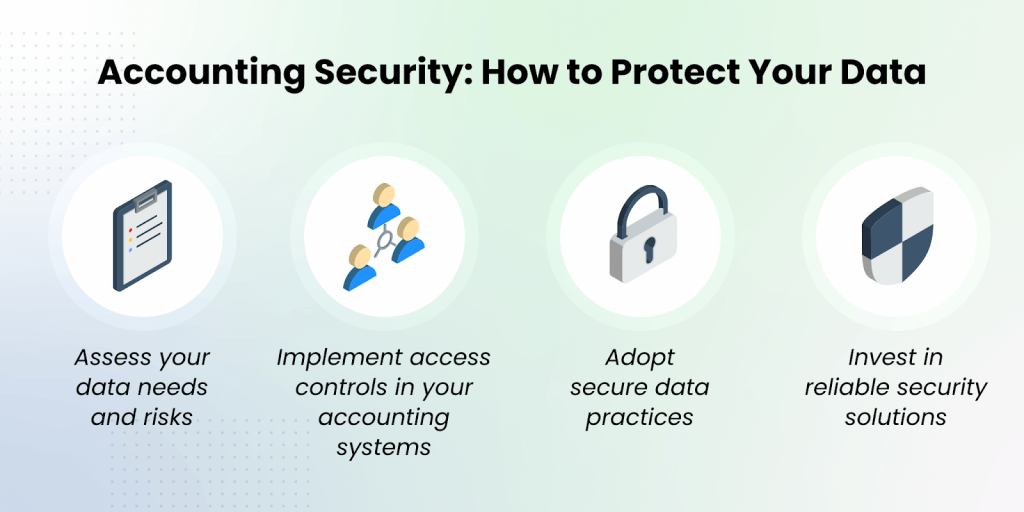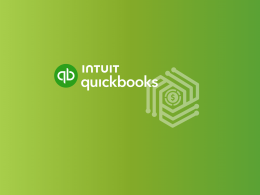If you’re in the accounting industry, either leading your firm or supporting it from within, you’re facing a crucial challenge every day: keeping sensitive financial information safe from cyber threats while making it accessible for necessary work.
This is made even more complex with the shift towards remote work and the increased reliance on cloud technology. As we explore the strategies for implementing accounting security in accounting firms, we’ll uncover how to keep your vital information both available for those who need it and secure from those who shouldn’t have it.
Contents:
1. Why should accountants be concerned with accounting security?
2. Accounting security: How to protect your data
3. Adopting secure data practices
4. Investing in reliable security solutions
5. The importance of a comprehensive accounting security strategy
Why should accountants be concerned with accounting security?
Data is the lifeblood of your firm, fueling everything from daily operations to strategic decision-making. It underpins your ability to provide timely, accurate, and compliant services to your clients. However, the increasing volume of data and its critical role in your firm’s model also make it a significant liability if not properly secured.
The dynamic nature of cyber threats requires a proactive approach to secure your firm’s data. It’s no longer enough to react to breaches after they occur.
“Accountants deal with very sensitive and confidential information about their clients such as social security numbers, bank account information and personal addresses. A data breach could compromise their clients and expose them to identity theft, financial fraud and other forms of malicious activities. Needless to say, clients would quickly lose trust in their accountants if such an incident occurs” – Abdullah Almsaeed, CTO, Financial Cents.
As an accounting firm owner, you must anticipate potential vulnerabilities, continually update your accounting security protocols, and ensure they remain compliant with an evolving regulatory industry.
This proactive stance will protect your firm’s reputation and the trust of your clients.
Accounting security: How to protect your data

1. Assess your data needs and risks
a. Identify critical data
The first step to implementing accounting security is to understand exactly what data your firm handles that’s of critical importance.
Critical data includes any information essential for your operations, client privacy, and compliance with regulations. This often encompasses client financial records, personal identification information, and transaction histories.
Start by conducting an inventory of the data you collect, process, and store. These could be invoices, receipts, tax information, etc. Categorize this data based on its sensitivity and the potential impact its loss could have on your firm and your clients.
b. Conduct a risk assessment
Once you’ve identified your critical data, the next step is to assess the risks associated with it. Consider the following when conducting your risk assessment:
- Vulnerabilities: Identify any weaknesses in your current data handling and storage practices that could be exploited.
- Threats: Understand the types of cyber threats that are most relevant to your firm, such as phishing, malware, or insider threats. A risk assessment involves evaluating the potential threats to your accounting data, including both external threats like cyber-attacks and internal ones such as accidental data leaks by employees.
- Impact analysis: Evaluate the potential impact of different types of breaches on your operations, reputation, and compliance status.
This assessment will help you prioritize your accounting security efforts based on the potential risks and impacts, guiding you towards implementing the most effective protections.
Importance of this foundational step
This initial step of assessing your data needs and risks is foundational to creating a robust data security strategy. It provides you with a clear understanding of what needs to be protected and why, enabling you to allocate your resources more effectively. Moreover, it sets the stage for the subsequent steps in this guide, where you’ll learn about implementing access controls, adopting secure data practices, educating your team, investing in security solutions, and developing a data breach response plan.
2. Implementing access controls in your accounting systems
a. Differentiate access levels
The cornerstone of robust accounting security is ensuring that access to sensitive data is strictly controlled and differentiated based on roles within your firm. Not everyone needs unrestricted access to all data.
Start by mapping out the roles within your accounting firm and determine the specific data each role needs access to in order to perform their duties. For example, junior staff may only need access to data relevant to their specific tasks, while senior accountants and partners may require broader access.
Implementing role-based access control (RBAC) ensures that individuals have access only to the data necessary for their job functions, minimizing the risk of accidental or malicious data breaches.
b. Use of authentication and authorization mechanisms
To enforce the access levels you’ve established, it’s crucial to implement strong authentication and authorization mechanisms. Authentication verifies the identity of users attempting to access the system, typically through passwords, biometric verification, or multi-factor authentication (MFA). MFA, in particular, adds an extra layer of security by requiring users to provide two or more verification factors to gain access.
Once a user’s identity is authenticated, authorization mechanisms determine the resources and data the user is permitted to access based on their role. This can be managed through access control lists (ACLs) or more dynamic policies that take into account the user’s context and behavior.
Benefits of robust access controls
Implementing strict access controls has numerous benefits for your firm:
- Minimizes insider threats: By limiting access to sensitive data, you protect financial records from accidental leaks or data breach within your organization.
- Enhances compliance: Many regulatory frameworks require strict access controls as part of their compliance criteria. Adhering to these standards can protect your firm from penalties and reputational damage.
- Improves data management: Clear access levels make it easier to manage data throughout its lifecycle, ensuring that only relevant personnel can access, modify, or delete data.
Robust access controls are a critical component of a balanced data security strategy. They ensure that while your team can access the data they need to serve your clients effectively, the integrity and confidentiality of that data are never compromised.
Adopting secure data practices
1. Encryption of data at rest and in transit
Encryption is your first line of defense in protecting sensitive data from unauthorized access. Encrypting data at rest involves converting your stored data into a format that can’t be easily interpreted without a decryption key.
This means even if data is stolen, it remains unreadable and useless to the thief. Similarly, encrypting data in transit protects your information as it moves across networks, preventing interception by malicious actors.
Utilizing strong encryption standards like AES (Advanced Encryption Standard) for data at rest and TLS (Transport Layer Security) for data in transit can significantly enhance your accounting security posture.
2. Regular security audits and compliance checks
Continuous vigilance is key in maintaining accounting security. Regular audits help identify vulnerabilities in your system before they can be exploited. These audits should examine all aspects of your security, from physical access controls to network security protocols and application security.
“It’s important to be proactive about protecting your data. Because the way a firm operates constantly changes, I’d encourage firms to reevaluate their policies on an annual basis in addition to when their processes change. For example, when introducing new technologies to the firm such as a new cloud application, it is pertinent that firms update their policies to account for this change” – Abdullah Almsaeed, CTO, Financial Cents.
Additionally, inventory and compliance checks ensure your handling practices meet the latest regulatory requirements, such as GDPR, HIPAA, or SOC 2. These checks not only help in avoiding costly penalties but also in reinforcing client trust by demonstrating your commitment to data protection.
3. Contribution to a secure and accessible data environment
- Improved data protection: Encryption and regular audits protect against external breaches and internal leaks, ensuring data integrity and confidentiality.
- Regulatory compliance: Staying compliant with data protection regulations safeguards your firm from legal and financial repercussions.
- Client confidence: Demonstrating robust data security practices strengthens client relationships by affirming your commitment to protecting their sensitive information.
Implementing these practices requires a commitment to ongoing assessment and adaptation as threats evolve and new vulnerabilities are discovered. However, the effort is well worth the payoff in securing your firm’s data assets and maintaining the trust of your clients.
Investing in reliable security solutions
1. Use essential tools and technologies
These include:
- Accounting workflow software: To keep tasks from slipping through the cracks by easily tracking the status of client work and store clients’ documents in one place.
- Firewalls and antivirus software: To protect your network and devices from malicious attacks and malware.
- Data loss prevention (DLP) systems: To monitor and control data transfers, preventing unauthorized access and leaks.
As the host of sensitive information, Financial Cents puts data security at the forefront of every feature. There are a myriad of security measures that we employ to protect our customers’ data. This includes encrypting all communications between our servers and our customer’s devices, regularly conducting vulnerability assessments and putting cybersecurity education as a requirement for everyone on our team that has privileged access to data. In addition, our systems and processes are reviewed and updated on a regular basis by cybersecurity experts.
Financial Cents is an accounting practice management software that is SOC II compliant and designed to help growing accounting firms scale up and boost profitability.
- Intrusion detection and prevention systems (IDPS): To identify and mitigate attacks on your network in real time.
- Secure backup solutions: To ensure data integrity and availability, even in the event of a breach or data loss incident.
Selecting the right mix of tools is dependent on your specific needs, the size of your firm, and the nature of the data you handle. If you run a small-sized accounting firm with basic data needs, you can consider a cloud-based accounting software like QuickBooks Online. It provides the flexibility to access your clients’ from anywhere and it is essential for small teams or solo practitioners.
2. Recommendations for vetting and selecting tools
Choosing the right tools for your accounting security solutions is as important as the solutions themselves. Consider the following when evaluating:
- Reputation and reliability: Look for solutions with a proven track record and positive customer testimonials.
- Compliance and security standards: Ensure the solutions comply with industry standards and regulations relevant to your firm.
- Scalability: Choose tools that can grow with your firm, accommodating increased data loads and evolving security needs.
- Support and maintenance: Opt for vendors that offer robust customer support and regular updates to their solutions.
The importance of a comprehensive accounting security strategy
Investing in reliable accounting security solutions forms the backbone of your firm’s data security strategy. However, it’s important to remember that technology alone isn’t a silver bullet. These solutions should be part of a broader, comprehensive approach that includes policies, procedures, and ongoing training for your team. Together, these elements create a defense-in-depth strategy that protects against a wide range of threats, both internal and external.
If you choose the right security tools and put in the effort to safeguard your company’s data, you’re not just shielding it from harm. You’re also showing your dedication to upholding top-notch standards of data integrity and confidentiality. This investment is a testament to your clients, demonstrating that their sensitive information is in safe hands.
Conclusion
The challenge of balancing data accessibility with security is ongoing. With cyberattacks becoming more sophisticated, accounting firms must stay vigilant.
For this reason, accounting firms need to invest in practice management software that incorporate security controls, or else risk falling behind the curve of cybersecurity for accounting firms.

.png)
![Accounting Security and Data Accessibility in Accounting [2024]](https://synder.com/blog/wp-content/uploads/sites/5/2024/04/how-to-balance-accounting-security-800x500.png)




Thanks for the article! Was helpful learning about managing accounting security and data accessibility.
Thank you, David, we’re glad this topic was helpful.